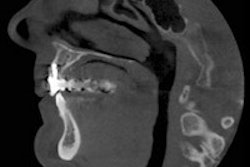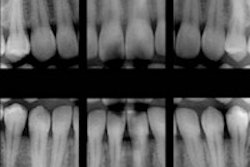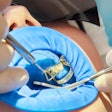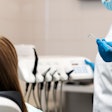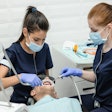
With the steady progression of technology, the digital versus film debate in dental radiography seems all but settled with digital as the victor as it is increasingly adopted. But researchers in Saudi Arabia who conducted a new study seem to say, "Not so fast."
The study compared the image quality of two digital radiography systems and a conventional film method with interesting conclusions, as reported in the Saudi Dental Journal (August 19, 2014).
"Conventional film yielded superior image quality that was statistically significant in almost all aspects of comparison," wrote the researchers from the division of oral radiology and diagnosis and the department of restorative dental sciences at the King Khalid University College of Dentistry in Abha. "Conventional film was followed in image quality by direct digital, and semidirect provided the lowest quality images." The former is "still considered the gold standard to diagnose diseases affecting the jawbone," they noted.
The dental community is gradually adopting digital radiography, particularly younger dentists. In one study, 69% of dentists between the ages of 31 to 40 had used digital radiography, while only 40% of those 61 and older had used it. But in the same study, 56% were satisfied with film, while only 37% agreed that digital gives a better clinical image, suggesting that the Saudi researchers' results should not be too surprising. The aforementioned study did, however, find that digital radiography users were more satisfied than their film-using counterparts.
In the current study, the researchers compared a direct digital system (Sidexis, Sirona), a semidirect digital system (VistaScan, Dürr Dental), and a conventional radiography system using E-speed film (Kodak). Direct digital imaging systems, also known as digital radiography systems, use charge couple device (CCD) or complimentary metal oxide semiconductor (CMOS) sensors that are connected to computers, they explained. Semidirect systems, also known as computed radiography systems, use photostimulable phosphor (PSP) plates that need to be digitized using special scanners.
While discussing their goals, the authors acknowledged that most studies on the topic "conclude that film and digital systems are nearly comparable to diagnose diseases affecting tooth-bearing areas of the jawbone." However, few studies comparing the three types of systems have been completed.
For this one, the researchers selected 25 extracted teeth that had been used for root canal procedure training by endodontic students; all of them had apical pathologies, had wax root canal fillings, and were mounted on a plaster base. After taking radiographs with each system with sensors and film at adult size 2 at a fixed distance, the images were saved or the film developed to be viewed by two observers. Film images were placed in an x-ray viewbox (Dentsply) with a 2x magnifying lens, while digital images were magnified by 2x as well.
With a five-point scale, the observers evaluated enamel clarity, dentin clarity, dentinoenamel junction (DEJ) clarity, root canal filling (gutta-percha) clarity, and details of the simulated apical pathology. Then the researchers analyzed their data with one-way analysis of variance (ANOVA) and Fisher's Least Significant Difference (LSD) tests.
The first observer found that the direct digital system was significantly superior to the semidirect digital system in all areas, per the posthoc LSD comparisons. Film was significantly better than semidirect in all areas save for apical pathology, in which the two performed similarly. While the researchers found no significant differences between direct digital and film, the latter produced trends of better results in every area except for the clarity of apical pathology.
The ANOVA for the second observer in his or her posthoc LSD comparisons produced several significant differences. Film outperformed the digital competition significantly in all areas but the clarity of apical pathology and clarity of the gutta-percha filling; trends suggested that is was better in those areas, too, but not significantly so.
While digital direct was nearly as good as film for the first observer, film was better than either digital system, per the results of both observers. Ultimately, the researchers concluded that "film is superior for diagnostic accuracy" and that, "between the digital systems, our study demonstrates that direct digital is superior to semidirect digital."




